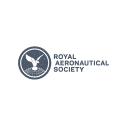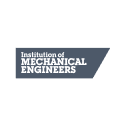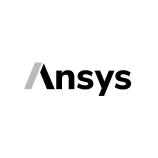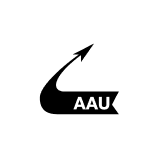Ensure optimal product design, performance, safety and compliance
Access 1,800+ validated engineering design guides
Drawing upon a legacy of more than 80 years, the Engineering Sciences Data Unit (ESDU) is a unique and unsurpassed knowledge base that provides reliable validated engineering design data, methods and software to engineers and designers.
- 1,800+ design guides
- 80 yrs in the industry
- 16 dedicated committees
- 200+ global industry, academic, and government experts

Who ESDU is built for:
Choose ESDU if you work in:
- Aircraft
- Launch vehicles
- Satellites
- Unmanned aerial vehicles (UAVs)
- Electric vertical take-off and landing (eVTOL) aircraft
- Air transport services – Maintenance
- Petrochemicals
- Minerals processing advanced
- Materials
- Food
- Pharmaceuticals
- Biotechnological products
- Heat exchangers
- Power plants
- Power generation
- Decommissioning
- Environmental
- Water plants
- Nuclear submarines
- Fuel fabrication/reprocessing
- Refineries
- All OEM vehicles
- Formula 1/racing cars
- Lightweight vehicles
- Wind turbines
- Buildings/Tall structures
- Bridges
Courses in :
- Aeronautical/Aerospace Engineering
- Mechanical Engineering
- Chemical Engineering
- Petroleum Engineering
- Structural Engineering

Integrate unmatched knowledge into your engineering process
Today’s engineers have ready access to multiple sources of information. What makes our content unique is its unmatched levels of depth, rigor, and comprehensiveness. Our products provide you with the collective knowledge of hundreds of engineers and include data and information that in many cases are unpublished and only available to ESDU through our committee process.
Here’s how we ensure the highest quality:
ESDU engineers develop a Data Item. Throughout the development, their work is monitored, guided, and rigorously validated by technical committees comprised of leading experts from industry, academia, and government organizations from around the world.
Key professional organizations test and endorse the Data Item to ensure it represents a consensus of opinion from experts in the field.
After rigorous testing and validation, we add the Data Item to ESDU, where you can access it, knowing that it has the quality and reliability your design process requires.

The accessible source for your validated design engineering methods and information
Your ESDU subscription includes:
- Your ESDU data series with software derivations, explanations, references, graphs, tables, and examples
- The ESDU Engineering Service
- All new releases and amendments within your subscription
- Customer support for access questions
- Direct access to engineering experts who will help you solve design problems
- Training on ESDU products
- All available from a single, efficient and clear user interface
Unique and unparalleled knowledge
Explore the ESDU Series
- Atmospheric properties
- Airframe components, including effect of powerplant/airframe interactions for propeller-powered and jet aircraft
- Effect of surface imperfections on drag
- Controls, flaps and leading-edge devices
- Aircraft stability, including derivative estimation
- Internal flow and propulsion systems
- Related Tools: International Standard Atmosphere (ISA) app, Wing lift-curve slope app
- Propulsion system noise
- Jet noise, including static-to-flight effects, propeller noise, airframe noise and boundary layer noise
- Cabin noise
- Atmospheric attenuation and ground reflection effects in the presence of wind and temperature gradients
- Attenuation provided by noise barriers
- Failure criteria
- Plate vibration and buckling
- Bonded joint analysis
- Stress concentrations
- Calculation of basic stiffnesses and stresses, including built-in thermal stresses
- Design guidance and suggested methods
- Aircraft topics: Motion equations, conversion formulae for rotation/translation of body axes, geometric/kinematic relationships for various axis systems, direction/incidence angles and damping measures
- Lateral aircraft motion, handling qualities, loading and aeroelasticity
- Linear system design: stability, response, control and assessment
- Methods for treatment of first- and second-order systems
- Non-linear system design
- Related Tools: Wing lift-curve slope app
- Constant amplitude stress-endurance curves (S-N curves) for aircraft materials (aluminum and titanium alloys/steels) and structural joints (riveted, bolted or bonded)
- Stress concentration factors
- Principles for designing against metal fatigue
- Statistical methods for dealing with small samples in design
- Correlated data on loading, resulting from gusts, taxing/ground operations
- Strength analysis of cracked/flawed structures or components
- Curves of crack propagation growth rate versus stress intensity factor range under constant amplitude fatigue loading
- Principles of fracture mechanics
- Methods of compounding to obtain stress intensity factors for “real life” complex geometries from simple theoretical solutions
- Data for stress intensity factors for the complex case of a pin-loaded lug
- Crack resistance curves for aeronautical metallic materials
- Hand calculation methods
- Computer programs based on empirically derived correlations
- Numerical methods
- Step-by-step calculation methods
- Single-phase forced and free convection in straight, annular, and coiled tubing, together with the pressure loss and heat transfer resulting from tube inserts/roughened surfaces
- Forced convection over cylinders/tube banks and free convection/radiation from simple shapes
- Heat pipe design/performance prediction, appropriate temperature measuring devices, and refractory lining materials requirements
- Condensation
- Evaporation
- Heat exchanger selection/costing, performance, and design
- Process integration, fouling and vibration in tube banks
- Selecting cam and follower type
- Selecting cam laws, both trigonometrical and polynomial
- Kinematic analysis
- Estimating basic dimensions and blending of cam profiles
- Cam methods: Selection of materials, manufacturing methods and lubricants
- Methods for designing parallel axis straight spur and helical gears
- Method for calculating contact and root bending stress limitations, compatible with BS 436: Part 3
- Kinematic design of epicyclic gear trains
- Linkage data and force analysis of linkages
- Balancing procedures for planar linkages
- Designing internal and external Geneva mechanisms
- Estimation methods for evaluating contact stress for a general contact with purely normal loading or with combined normal and tangential loading for gross sliding conditions
- Flight-test handling measurements
- Analysis using equations of motion
- Reduction to standard conditions by incremental adjustment
- Non-dimensional group presentations
- Correction of air-data measurements and methods of in-flight thrust measurement for turbo-jet and turbo-fan engines
- Related Tools: International Standard Atmosphere (ISA) app, Wing lift-curve slope app
- Vapor pressure
- Liquid density
- Liquid heat capacity and enthalpy
- Liquid viscosity
- Liquid and gas thermal conductivity
- Fire hazard properties
- Properties of water substance
- Thermophysical properties of several industrially important compounds, including modern refrigerants
- Design of commonly used components: Struts, beams, shafts, plates, pressure vessels, pipes, fastenings, welds, and springs, including data on stiffnesses, static stresses/deflections, buckling loads and fatigue strengths
- Data for certain stress intensity factors and contact stresses
-
Data on the fatigue strength of materials, both as constant amplitude stress versus endurance (S-N) curves and in terms of linear elastic fracture mechanics:
- Low and high alloy and stainless steels made to US, UK, and European specifications
- Fracture mechanics data: Crack propagation rates, many down to threshold, and fracture toughness values
- Related Tools: Inelastic stress-strain curves from ESDU 89052
- Elastic or inelastic stresses, strains, displacements or buckling loads under static loading
- Metallic materials properties, principal stresses and strains, and failure criteria for specific components: Beams, struts, panels, stress raisers (stress concentrations) and joints
- Methods in computational fluid dynamics (CFD)
- Methods of calculating the pressure distribution and loading on aerofoils and wings in high subsonic flow
- Methods of calculating the drag-rise Mach number and/or the wave drag of aerofoils, wings, and bodies
- Exchange rates between pertinent aerofoil and wing design parameters at the drag-rise condition, including the prediction of shock-induced separation
- CFD-data for the wave drag coefficient for families of low fineness ratio forebodies and for an extensive family of axisymmetric forecowl
- Extensive treatment of the application of vortex generators to the control of shock-induced separation, particularly on wings
- Related Tools: International Standard Atmosphere (ISA) app, Wing lift-curve slope app
- Guidance on choosing the type of journal or thrust bearing to meet the requirements of load, speed and associated environmental/operational factors
- Step-by-step procedure for the design and material selection of dry rubbing bearings
- Selection procedures for the choice of rolling bearings
-
Calculation methods for the design and analysis of:
- Steadily loaded hydrodynamic journal bearings with axial grooves and circumferential grooves including superlaminar operation and low viscosity process fluid lubrication
- Hydrostatic bearing design with capillary restrictor control
- Steadily loaded fixed-inclined-pad and off-set pivot, tilting pad, thrust bearings
- Contact phenomena
- Methods for the determination of minimum film thickness in elastohydrodynamic concentrated Hertzian contacts
- Design of tanks for forced-circulation oil-lubrication systems, grease life estimation in rolling bearings, selection of filter rating and the selection of synthetic oils
- Estimation of equilibrium temperatures in self-contained bearing assemblies
- Design of crossed-flexure pivots
- Selection procedures for the dynamic sealing of fluids dealing with both rotary and reciprocating seals
- Properties of common engineering materials
- Dynamics of a simple flexible rotor supported in axial groove hydrodynamic journal bearings
- Stress and lubrication characteristics of disc cams
- Best relative performance of various designs for a noisy environment
- Noise from turbo-jet engines and propeller-driven aircraft
- Natural frequencies of plate, box, and shell structures
- Methods for estimating damping, including radiation damping
- Methods and a computer program for estimating design wind speeds and turbulence properties for all types of terrain including topographic effects on wind speed
- Comprehensive prediction procedures for estimating force and pressure coefficients for structures such as stacks, masts, towers (including those with polygonal sections), lattice structures, beams, plates, boundary walls, aerials, and regular building shapes
- Methods and computer programs for predicting dynamic effects associated with the oscillation of a structure induced by wind effects (such as buffeting by turbulence, vortex shedding and galloping) close to one, or more, of the structure’s natural vibration frequencies
- Guidance on the interaction effects of closely spaced circular cross-section structures
- Methods for obtaining the natural vibration characteristics of frame, shear, and sway buildings, needed for the prediction of their response to wind or earthquake
- Method for estimating the damping of buildings
ESDU Packages
A collection of the Aerodynamics Series, USAF DATCOM plus related NACA and NASA documents
A collection of methods and data for design use in a wide range of disciplines that comprise the ESDU Aerospace Package
A collection of methods from the discipline areas of Stress and Strength, Structures, Composites, Fatigue Complete, Vibration and Acoustic Fatigue, MMDH and relating NASA/NACA reports
A group of independently validated design methods, best practices, data and software tools for solving complex automotive engineering problems and enabling faster and more reliable decision-making during vehicle product design
Validated data, procedures and software, endorsed by professional institutions, for use in the design of nuclear facilities and their maintenance, repair and operation (MRO)
Methods and data to evaluate or predict the performance of process plant equipment and process systems
A set of design information consisting of validated ESDU methods, data and software, including: The ESDU Structures Series Analysis and Design of Flight Vehicle Structures by E.F. Bruhn MMDH - Metallic Materials Data Handbook MMPDS - Metallic Materials Properties Development and Standardization Handbook NACA/NASA references from the ESDU Structures Series NACA/NASA references from E.F. Bruhn’s text
Aerospace Materials Data
Data on aerospace structural metallic materials properties to assist engineers with meeting design requirements
Statistically based design values for commonly used metallic materials and joints and data on other mechanical and physical properties needed to design aerospace structures
Additional Engineering References
A collection of all NACA documents available from ESDU
A collection of all NASA documents available from ESDU
The USAF Stability and Control DATCOM (Data Compendium) was compiled between 1960 and 1978 by the McDonnell Douglas Corporation in conjunction with the engineers at the Flight Dynamics Laboratory at Wright-Patterson Air Force Base. DATCOM provides a systematic summary of methods for estimating basic stability and control derivatives. The book is intended to be used for preliminary design purposes before the acquisition of test data.

Optimize and streamline product design
Engineering and academic professionals use ESDU to:
- Improve designs
- Ensure quality
- Aid compliance
- Complement in-house design manuals, codes, standards, and analysis tools
- Solve technical problems faster
- Develop innovative solutions
- Shorten certification cycles with prior ESDU recognition from major global aviation authorities
- Bring better products to market faster
- Reduce costs
Support your workflows:
- Product design and certification
- Research and development
- Engineer training
- Knowledge/expertise capture
- Product evaluation
- Product optimization
- Validation/benchmarking of computational methods

Trusted by a global customer base
If the right senior engineer isn’t on the team, the problem goes around several loops of analysis…I just asked the Engineers to refer to the ESDU method to fix a pretension that was between the bolt yield and separation, and that minimized the fatigue cycles on the bolt.
Chief EngineerSAFRAN Group
The value of ESDU is that it helps us move much more quickly to the correct answer. On average, we have reduced the amount of time required to design aerodynamic surfaces by 50% compared to the traditional approach. The answers that we obtain using the ESDU methods also tend to be more accurate because they are based on a combination of theory and experimental data, rather than theory alone.
Head of Advanced Aerodynamic DesignCessna Aircraft
ESDU provides unique validated data. I spend up to 30% of my time trying to validate some of the data used by our engineers. ESDU saves more than the cost of an engineer.
Senior design engineerBell Helicopters
ESDU Data Items are reviewed and endorsed by:
The Royal Aeronautical Society is the world’s only professional body dedicated to the entire aerospace community. Established in 1866 to further the art, science and engineering of aeronautics, the Society has been at the forefront of developments in aerospace ever since.
The Institution of Mechanical Engineers is the fastest-growing professional engineering institution in the UK. 115,000 members work at the heart of the country’s most important and dynamic industries.
The Institution of Chemical Engineers is the global professional membership organization for people with relevant experience or an interest in chemical engineering.
Explore our resources
-
ESDU Automotive Design Methods
-
ESDU Ejectors and Jet Pumps
-
ESDU Aerodynamics Design Collection
-
ESDU Academia Brochure
-
ESDU Aerostructures Brochure






